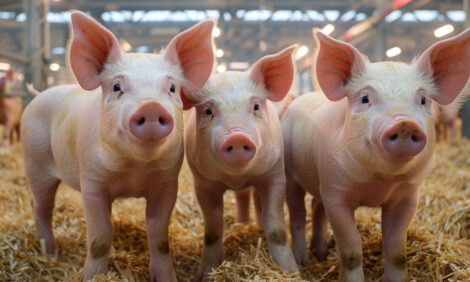



AASV: Eradication of pseudorabies in the US
Major improvements in pseudorabies diagnostics and vaccines facilitated its eradicationEditor's note: The following is from a presentation by Jeff Zimmerman, DVM, PhD, Department of Veterinary Diagnostic and Production Animal Medicine, Iowa State University, during the 2024 annual conference of the American Association of Swine Veterinarians.
In the US, reports suggesting pseudorabies virus (PRV) in cattle date back to 1813. In 1902, Aladar Aujesky demonstrated the viral etiology of the disease. Beginning in the 1960’s, clinical PRV in commercial herds was reported with increasing frequency in both North America and Europe. Estimated annual losses of PRV prior to its eradication were $126 million (in 2023 dollars).
Animal health organizations and the United States Animal Health Association (USAHA) have played a major role in US animal health initiatives. In the case of PRV, the USAHA, the Livestock Conservation Institute (now the National Institute for Animal Agriculture), and the National Pork Producers Council led the development and implementation of PRV eradication. For example, the 1975 Livestock Conservation Institute’s annual meeting featured a symposium on PRV and formed a PRV Committee. Ultimately, a national eradication program was approved by the National Pork Producers Council in 1989 with a start date of January 1.
Eradication processes
Extensive research on PRV and PRV eradication (pilot projects) conducted in the early 1980s provided a broad knowledge base, but, until the mid-1980’s a herd diagnosis was based on the detection of a serum-virus neutralizing antibody. Major improvements in PRV diagnostics and vaccines were achieved in the 1980’s.
In particular, the development of Differentiating Infected from Vaccinated Animals (DIVA) vaccines based on PRV deletion mutants that did not express specific glycoproteins made it possible to use serum antibody ELISAs to differentiate vaccinated from field virus-infected pigs. The DIVA vaccines were highly effective, protected pigs against clinical disease, reduced the shedding of the virus, and controlled clinical outbreaks, but did not eliminate the PRV infection and spread.
The US Federal Government spent $72 million on the project during the first 10 years of the program. Additional costs were incurred by the various state governments and swine producers. Despite some setbacks in the latter 1990’s, the National Pseudorabies Control Board announced that all commercial swine herds in the US were free of pseudorabies virus in 2004.
Herd sampling protocols
During the classical swine fever (CSFV) eradication program of the 1960’s, all pigs in a suspect herd were sampled and tested (“whole herd” or census sampling). Census sampling was feasible then because the average herd held around 50 pigs.
The PRV program differed from the CSFV program by implementing routine testing of herds using statistically based “representative” sampling. This change was not made easily. At a meeting in 1986, the proponents of census sampling and the advocates of representative sampling hotly debated the two approaches, with representative sampling ultimately emerging the winner.
Sampling frequency and sample size were based on herd type and size. For example, commercial herds were sampled annually and seedstock producers sampled quarterly. Sample size varied between 25 to 29 animals; 29 animals were bled in herds of 1,000 pigs or more. The sampling protocol was modified over the course of the eradication program so that each finishing barn was considered a “herd.” Thus, a farm with three 1,100 head finishing barns would bleed 29 pigs per barn, for a total of 87 animals.
Pseudorabies eradicated
The PRV eradication program was successful because of:
- Strong, long-term industry support and effective federal-state-industry collaboration.
- A substantial scientific understanding of the natural history of PRV.
- The availability of diagnostically sensitive and diagnostically specific tests. In the case of PRV, the crucial role of highly effective DIVA vaccines and antibody ELISAs cannot be exaggerated.
- Willingness to apply new concepts. Representative sampling was accepted and integrated into the PRV program and the “whole herd” sampling used in the CSFV program abandoned as impractical and unnecessary.
By 1994, early in the PRV eradication program, there were 150,000 US hog farms and the industry was in transition to a different production model. That is, the small, outdoor herds of the CSFV eradication era were mostly being replaced with larger, multi-site, specialist (breeder or finisher) operations. These changes in the industry are relevant because the processes that worked on small-scale farms of the CSFV era would not have worked on the larger farms of the PRV era. And, most probably, the PRV eradication design will not work on the 65,000 farms of 2024.
Although rarely a winning strategy, “Generals always prepare for the last war, especially if they won.” We would be wise to keep this caution in mind as we prepare to deal with the issues facing our industry.









